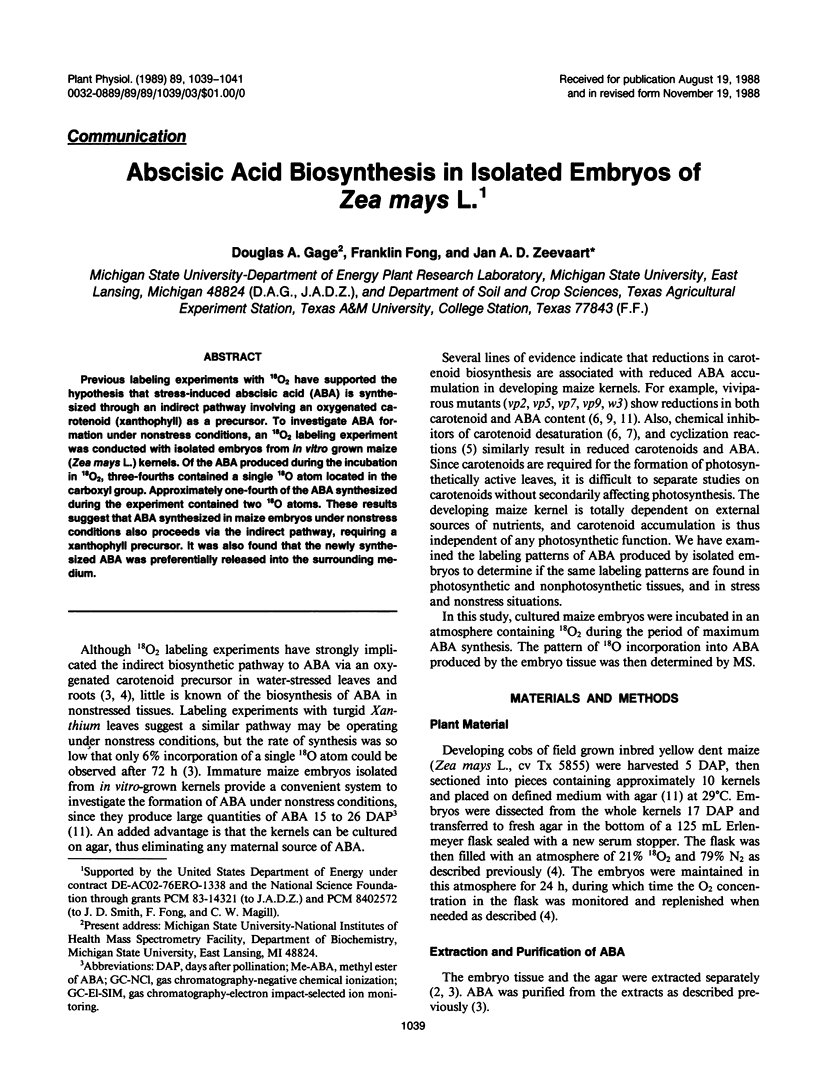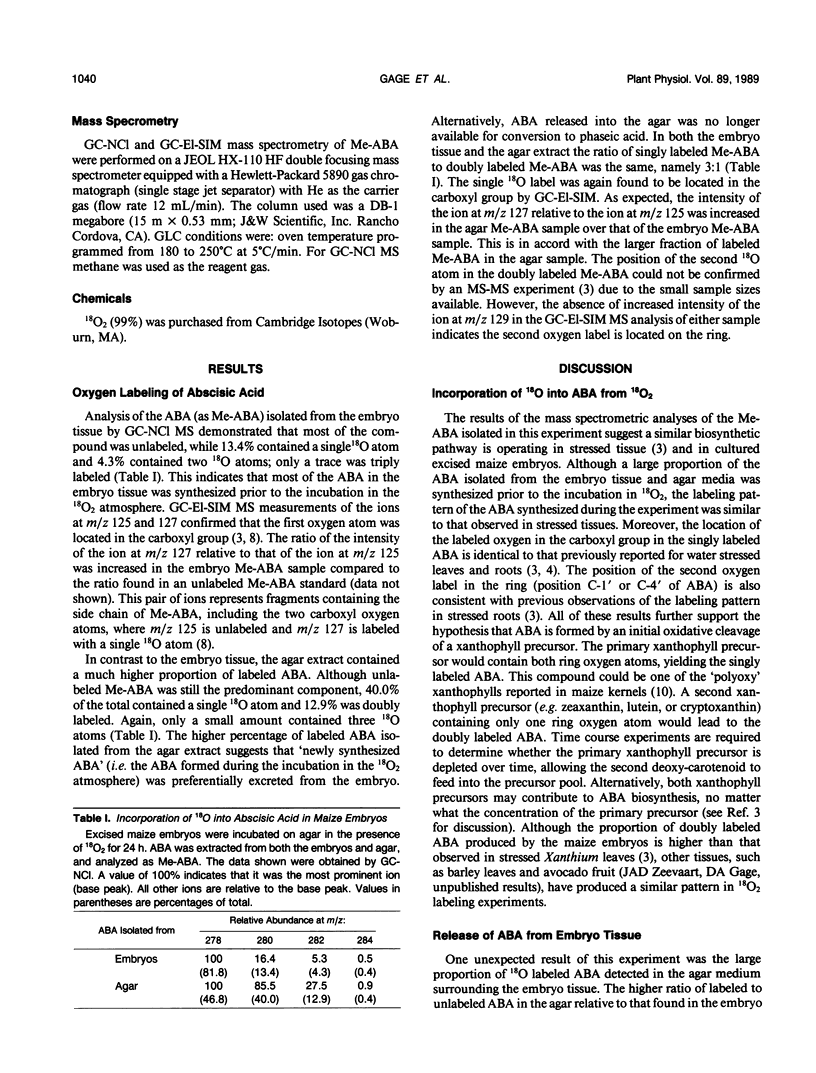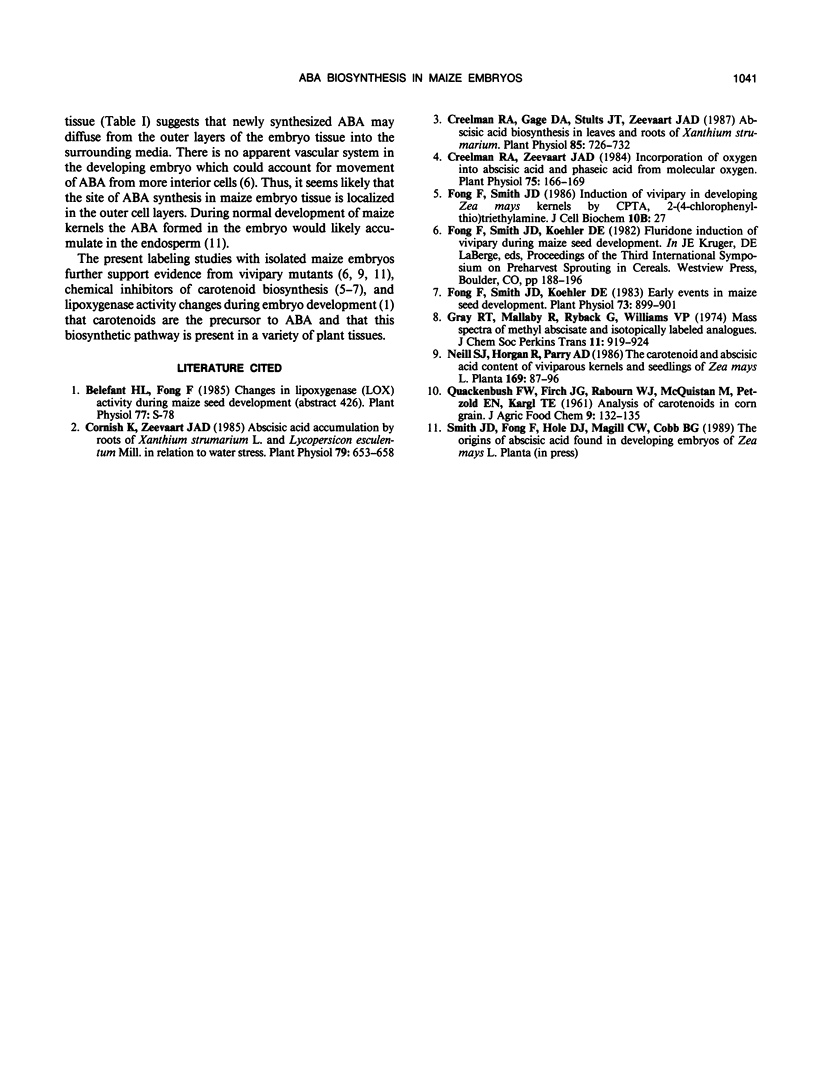Abstract
Previous labeling experiments with 18O2 have supported the hypothesis that stress-induced abscisic acid (ABA) is synthesized through an indirect pathway involving an oxygenated carotenoid (xanthophyll) as a precursor. To investigate ABA formation under nonstress conditions, an 18O2 labeling experiment was conducted with isolated embryos from in vitro grown maize (Zea mays L.) kernels. Of the ABA produced during the incubation in 18O2, three-fourths contained a single 18O atom located in the carboxyl group. Approximately one-fourth of the ABA synthesized during the experiment contained two 18O atoms. These results suggest that ABA synthesized in maize embryos under nonstress conditions also proceeds via the indirect pathway, requiring a xanthophyll precursor. It was also found that the newly synthesized ABA was preferentially released into the surrounding medium.
Full text
PDF


Selected References
These references are in PubMed. This may not be the complete list of references from this article.
- Cornish K., Zeevaart J. A. Abscisic Acid Accumulation by Roots of Xanthium strumarium L. and Lycopersicon esculentum Mill. in Relation to Water Stress. Plant Physiol. 1985 Nov;79(3):653–658. doi: 10.1104/pp.79.3.653. [DOI] [PMC free article] [PubMed] [Google Scholar]
- Creelman R. A., Gage D. A., Stults J. T., Zeevaart J. A. Abscisic Acid Biosynthesis in Leaves and Roots of Xanthium strumarium. Plant Physiol. 1987 Nov;85(3):726–732. doi: 10.1104/pp.85.3.726. [DOI] [PMC free article] [PubMed] [Google Scholar]
- Creelman R. A., Zeevaart J. A. Incorporation of oxygen into abscisic Acid and phaseic Acid from molecular oxygen. Plant Physiol. 1984 May;75(1):166–169. doi: 10.1104/pp.75.1.166. [DOI] [PMC free article] [PubMed] [Google Scholar]
- Fong F., Smith J. D., Koehler D. E. Early Events in Maize Seed Development : 1-Methyl-3-phenyl-5-(3-[trifluoromethyl]phenyl)-4-(1H)-Pyridinone Induction of Vivipary. Plant Physiol. 1983 Dec;73(4):899–901. doi: 10.1104/pp.73.4.899. [DOI] [PMC free article] [PubMed] [Google Scholar]


